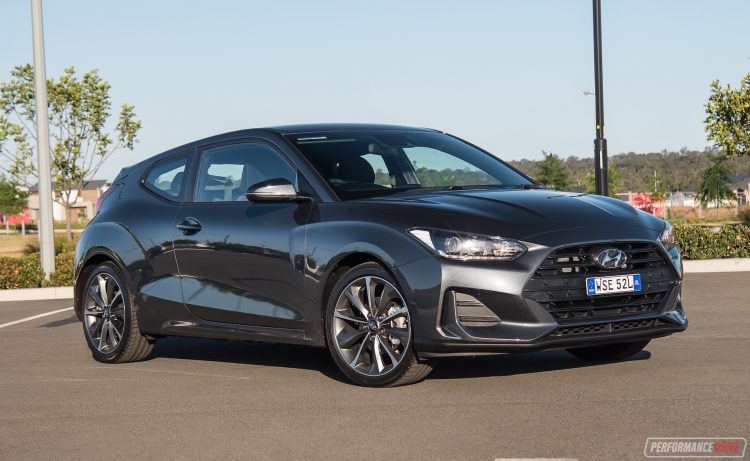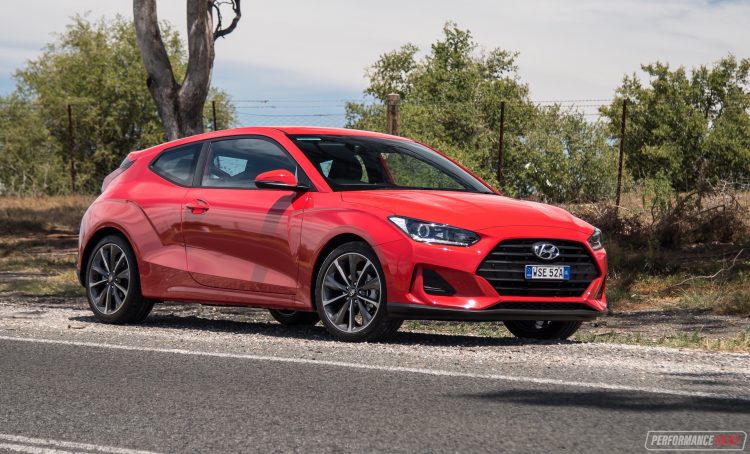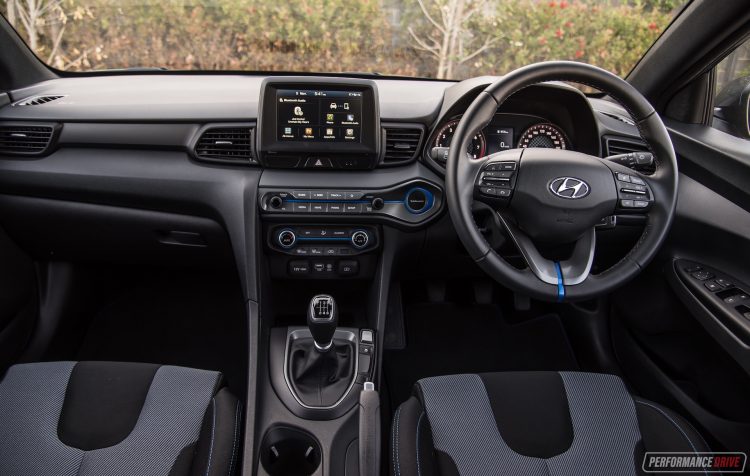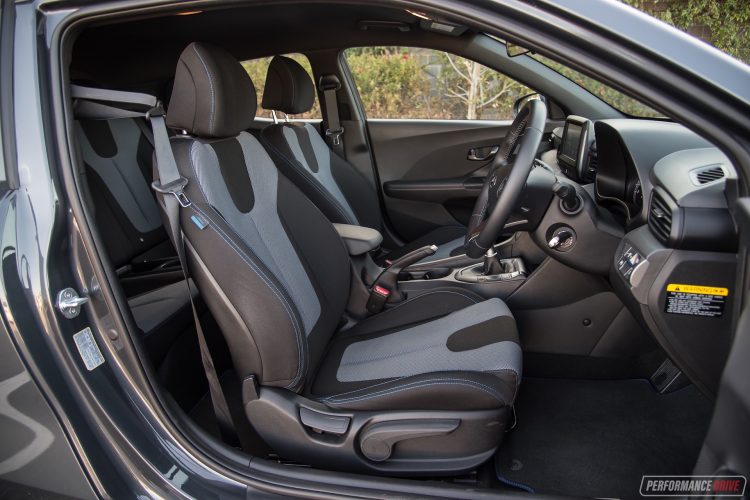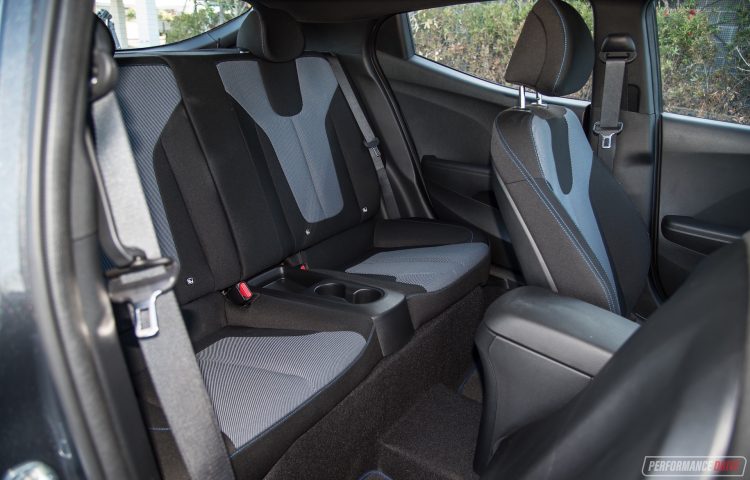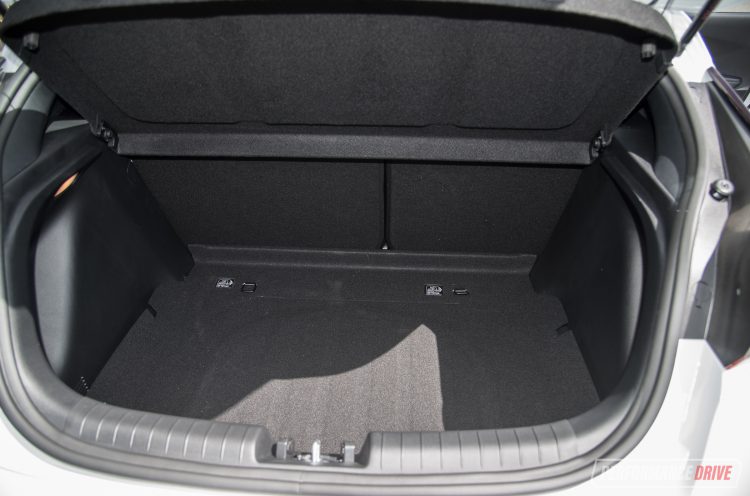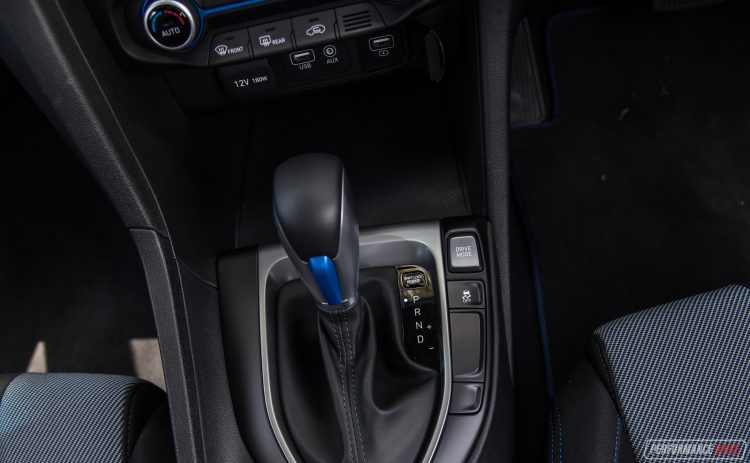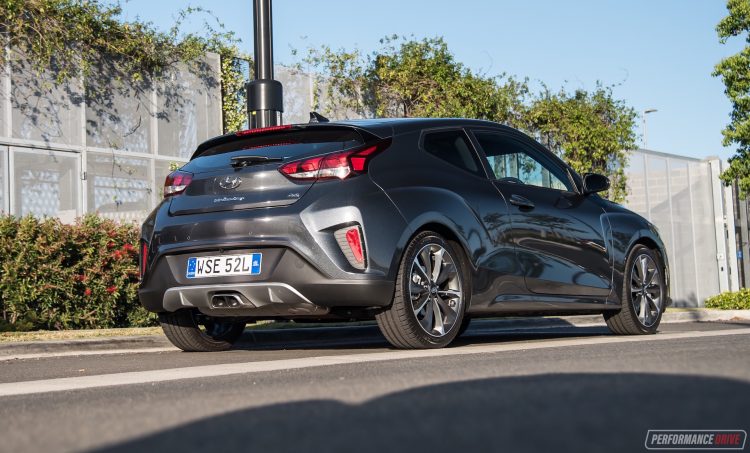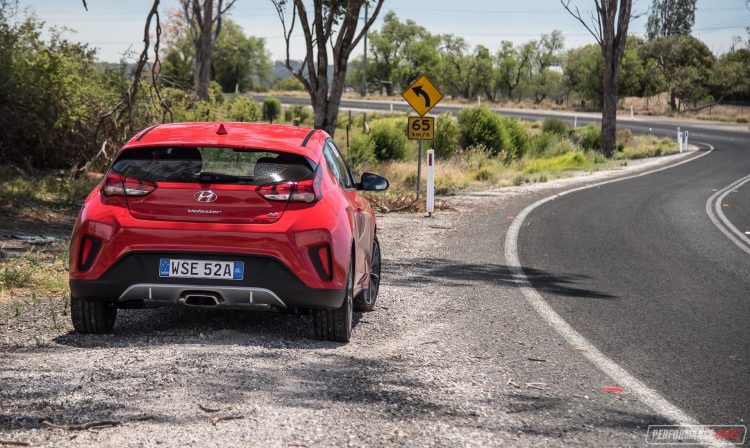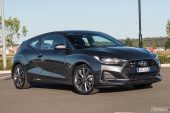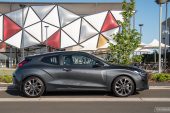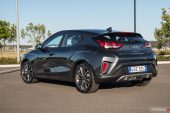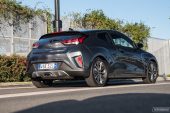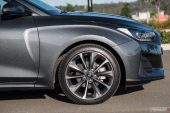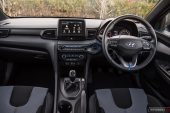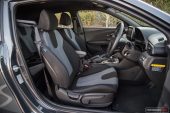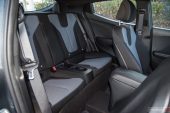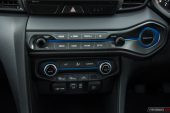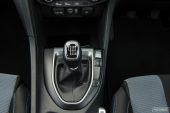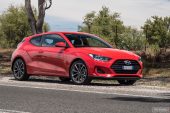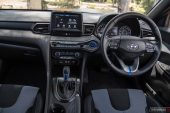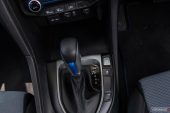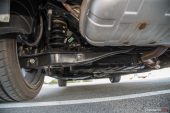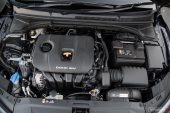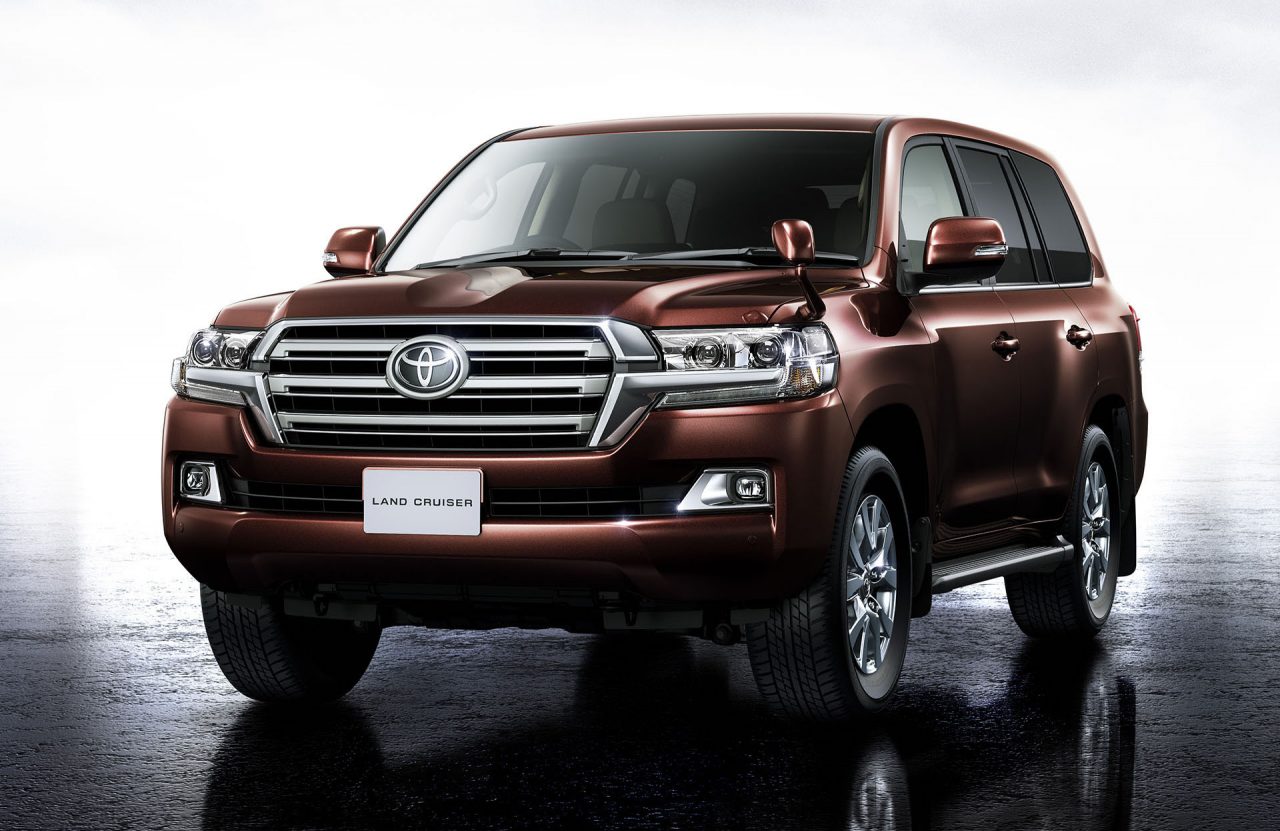The Veloster is not a high-volume seller for Hyundai. But the carmaker is one of only a few that at least offers something for the fun, entry-level sports car segment. It is a niche market that targets drivers who wish for a car that is a little different from the mainstream, with a sporty vibe. That’s exactly what the 2020 Veloster is aiming at.
There are two engines to choose from for the new model; a bigger, naturally aspirated 2.0-litre petrol four-cylinder for the entry grade (replaces non-turbo 1.6L), and it’s available with a six-speed manual or six-speed auto.
And then there’s a 1.6-litre turbo-petrol little ripper, producing 150kW and 275Nm. This is available with either a six-speed manual or a seven-speed dual-clutch auto. Buyers are offered the Turbo and the Turbo Premium, while the base 2.0L comes in one trim only.
Here we’re reviewing the base model Veloster 2.0 MPi, and trying out both the six-speed manual and auto gearboxes. Prices start from $29,490 for the manual, and from $31,790 for the auto (plus on-road costs).
2020 Hyundai Veloster 2.0 MPi – THE SPECS
Manual
[column width=”47%” padding=”6%”]Engine: 2.0-litre four-cylinder
Output: 110kW@6200rpm / 180Nm@4500rpm
Transmission: Six-speed manual
Drive type: Front-wheel drive
Wheels: F & R: 18×7.5, 225/40
ANCAP: Not tested
Kerb weight: 1295kg
Power-to-weight: 11.77:1 (kg:kW)
Official fuel economy: 7.0L/100km
Economy during test: 7.9L/100km
Fuel capacity/Type: 91L/50 RON[/column] [column width=”47%” padding=”0″]Power efficiency: 15.71kW:L/100km
0-60km/h: 4.03 seconds*
0-100km/h: 8.77 seconds*
60-110km/h: 5.77 seconds*
1/4 mile: 16.47 seconds at 141.8km/h*
Max acceleration: 0.569g
100-0km/h braking: 2.96 seconds at 37.49 metres*
Max deceleration: -1.144g
Decibel at idle: 41*
Peak decibel at 60-100km/h: 79*
Priced from: $29,490[/column][end_columns]
Auto
[column width=”47%” padding=”6%”]Engine: 2.0-litre four-cylinder
Output: 110kW@6200rpm / 180Nm@4500rpm
Transmission: Six-speed manual
Drive type: Front-wheel drive
Wheels: F & R: 18×7.5, 225/40
ANCAP: Not tested
Kerb weight: 1315kg
Power-to-weight: 11.95:1 (kg:kW)
Official fuel economy: 7.0L/100km
Economy during test: 7.9L/100km
Fuel capacity/Type: 91L/50 RON[/column] [column width=”47%” padding=”0″]Power efficiency: 15.71kW:L/100km
0-60km/h: 4.39 seconds*
0-100km/h: 9.38 seconds*
60-110km/h: 6.51 seconds*
1/4 mile: 16.81 seconds at 138.8km/h*
Max acceleration: 0.535g
100-0km/h braking: 2.96 seconds at 37.49 metres*
Max deceleration: -1.144g
Decibel at idle: 41*
Peak decibel at 60-100km/h: 79*
Priced from: $31,790[/column][end_columns]
* Figures as tested by PerformanceDrive on the day. Factory claims may be different
2020 Hyundai Veloster 2.0 MPi – THE PACKAGE
You don’t get a huge amount of kit at this entry level but it’s not as sparse as you might expect. You get 18-inch alloys, forward collision mitigation, rear parking sensors and a rear-view camera, single-zone climate control, auto headlights, daytime running lights, lane-keeping aid with active assistance, tyre pressure monitoring, and a multimedia touch-screen.
It misses out on features like blind-spot sensors, front parking sensors, auto steering parking assist, distance-controlled cruise control, road sign recognition, auto-dipping high beam, paddle shifters, a digital instrument cluster, push button start, and wireless phone charging capability. For the $30k price tag, we would expect at least a couple of these to be included.
Where it exhibits its appeal is in the design. It runs with a sleek profile and low roofline for a noticeably sporty look. The bonnet is the largest section of the car in true sports car form. The front end looks sharp and aggressive, and the body gets tighter and lower with small windows as it flows to the rear, which shows an aerodynamic mindset from the designers. The rear end is now less rounded and made sharper than the previous generation. Overall, the fresh design fits perfectly with its sport/coupe market.
From the inside, nearly all surfaces are made of hard plastics, but they feel sturdy. The layout is easy to follow and will be very familiar to Hyundai drivers. Even though the Veloster is not primarily made to be a practical car, it still has plenty of storage spaces to offer. There are large door pockets, a large centre tray area, and a centre console big enough to fit a cubed tissue box and more.
The multimedia screen is not class-leading, but it performs the basic functions well. It’s a 7.0-inch unit paired up to a six-speaker stereo, with Bluetooth, USB, and Android Auto and Apple CarPlay connectivity as standard. The Turbo grants you a bigger 8.0-inch screen with sat-nav, digital DAB+ radio, and an eight-speaker Infinity sound system.
It’s generous for Hyundai to provide a leather-appointed steering wheel and gear knob in the base spec. The seats, although not leather, are still shaped in a bucketed way to give off a sporty character. But they don’t offer much lumbar support, nor is there a lumbar adjustment.
Front seat passengers have tonnes of room to play with thanks to more priority given to the front than the rear. If you do find yourself summoned to the rear, it’s adequate, and particularly good for this class. Hyundai has made some revisions to the back for the new model, expanding the door opening, and moving the roof further back so the hatch lid no longer closes above the rear passengers’ heads. There is still no middle seat, so if you need five seats the Veloster is no good to you.
In terms of carrying cargo, the boot measures 303 litres. It is perfectly sized to fit the weekly shop in. Large boxes might become troublesome with the small hatch opening, but you can fold down the rear seats for long-stretching depth. Comparatively, the Toyota 86’s boot size is only 237 litres.
2020 Hyundai Veloster 2.0 MPi – THE DRIVE
Let’s not beat around the bush here, the Veloster is best experienced with the turbo engine. Hyundai would have started the plan off with the turbo and probably stripped it back from there to offer a cheaper model to expand its market reach. Well, that what it seems like. The non-turbo could appeal to young drivers who would like cheaper insurance, however.
The base 2.0L engine produces 110kW at 6200rpm and 180Nm at 4500rpm. We think it is best experienced with the manual transmission as the auto can feel quite sluggish. Across the 0-100km/h sprint we clocked 8.77 seconds in the manual, and 9.38 seconds in the auto. These are improved on the initial times we achieved during the official media launch event last year, mainly because we were able to run more tests without the time constraints of the event.
Aside from new Veloster 2.0 lacking a little oomph, it is a light car. So, the initial zip and get-up on easy throttle is better than the outputs convey. The six-speed auto is also very quick and smooth to change through the ratios, as opposed to the manual which is obviously not as relaxing. We love the sound of the sporty exhaust when cruising under 4000rpm. It’s not too overbearing, with just the right hint of sportiness.
But it’s when you hit a hill, or when you have a load on board, that the auto does struggle. There is a sport mode in both the manual and auto, which does help to make the engine feel more responsive. However, once you go past around half throttle it doesn’t seem to make much difference in either mode.
Being a fairly conventional and basic engine means that it can run on 91 RON and E10 fuel, which will be appealing to those chasing a budget. Officially, the Veloster 2.0 manual averages 7.0L/100km and the auto does 7.1/100km. Our testing returned an average of around 7.9L/100km for both, which is standard for an engine of these specs.
The ride and handling is the strongpoint of the South Korean-built vehicle. It gets independent multi-link rear suspension this time around, torque vectoring control, and quicker electric steering, which all helps to provide lots of fun behind the wheel. The ride is not too firm, but firm enough to punch around corners without feeling like you’re going to fall out of the window.
And because of its light weight, you can throw it around the city streets hurriedly, and it joyously plays along. It will hold onto corners and give the right feedback to keep you feeling in control, too. Thanks to locally tuned suspension, bumps rarely upset the balance of the car (although road noise is loud).
Overall, we’re sure you’ll agree it is very pleasing to drive along any Aussie backroad or downhill mountain pass.
2020 Hyundai Veloster 2.0 MPi – THE VIDEO
2020 Hyundai Veloster 2.0 MPi – THE VERDICT
If you’re after a car that helps you exhibit your sporty, youthful side, the Veloster will do this well. But we think it is well worth spending the extra dosh on the turbo if you can stretch to it. The 2.0L engine just doesn’t do the rest of the car justice. Even though it’s an entry-level model, the great chassis and handling beg for more power and torque.
Engine aside, the locally tuned suspension is wonderfully composed and matches the athletic design. Hyundai has also made some nifty improvements to practicality with the new model, so it’s more liveable and everyday-suitable than ever before. All of this means it should continue to put a decent dent in the entry sports car market.
[column width=”47%” padding=”6%”]PROS:
– Very composed handling and quiet ride
– Sporty note from exhaust
– Unique and practical design for the sports car market
– Five-year/unlimited kilometre warranty[/column] [column width=”47%” padding=”0″]CONS:
– 2.0L feels underpowered
– Small touch-screen
– Long, coupe-like driver’s door can be a hassle in carparks[/column][end_columns]
As always, if you’re thinking about buying a new car don’t forget to click here to speak with our car buying specialists.
